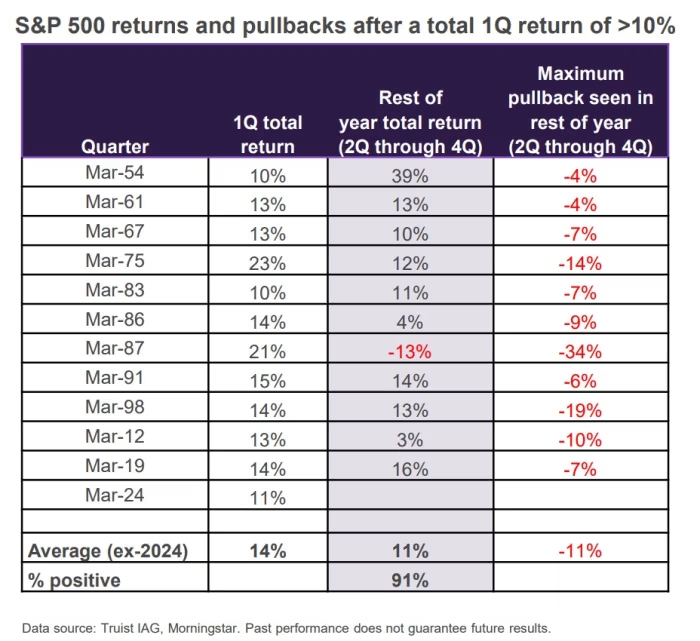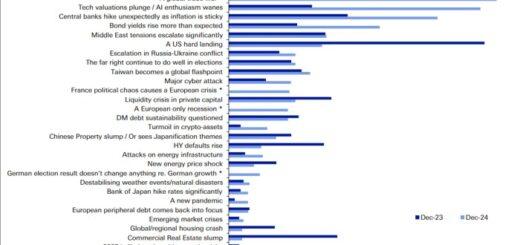Bumpy Roads to Profits: Strategist’s Outlook on Stock Market Pullbacks
Monday witnessed the S&P 500 closing below its 50-day average amidst unexpectedly strong retail sales data and a temporary lull in the Iran-Israel conflict, leading to a rise in Treasury yields.
The benchmark index has now retreated 2% from its late March highs, amidst turbulent trading following surprising inflation data, geopolitical tensions, and a lackluster start to the first-quarter earnings season.

Keith Lerner, Truist Advisory Services’ chief market strategist, noted that market pullbacks are commonplace, with only a few years in the last four decades escaping retractions exceeding 5%.
Examining S&P 500 returns and pullbacks post a first-quarter surge of at least 10%, Lerner found an average drawdown of 11% for the remainder of the year. Nonetheless, the total return for quarters two through four averaged 11%, with 91% being positive—except for the exceptional case of 1987.
Lerner remains bullish on stocks, highlighting the economy’s resilience. He emphasized the historical lesson that a robust economy with minimal rate cuts performs better than a weakening one requiring significant cuts, which should bolster earnings.
Moreover, Lerner emphasized stocks’ role as a partial hedge against inflation, given its correlation with increased sales and earnings.
Despite rising oil prices, recessions typically follow year-over-year gains of over 80%, which current figures fall short of, with just a 5% increase in the front-month contract over the last year.
Lastly, Lerner pointed to robust price support for the S&P 500 in the 4,800 to 5,000 range, with structural support at 4,600.
In conclusion, Lerner maintains that the evidence suggests a bull market, although the ongoing correction may have further to run in terms of price and/or duration. He advises sidelined investors and those below target equity allocations to consider dollar-cost averaging and potentially increasing investments during a deeper, more typical correction.




